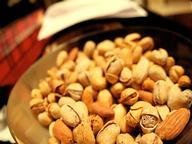Quiz Answer Key and Fun Facts
1. Peanuts originated in South America where they were first domesticated. To which of the following options is the peanut closely related?
2. The first peanut butter patent was granted to a Canadian in 1884. What was the name of the inventor?
3. The first peanut butter patent granted to an American was in 1895. What was the main difference between the Canadian and American methods of creating the tasty treat?
4. Before there could be an American peanut butter industry, there had to be a big enough national peanut crop. Which was the FIRST US President to grow peanuts commercially?
5. Not many processed foods have been regulated as much as peanut butter in America. What according to the FDA is the acceptable quantities of ingredients in peanut butter?
6. In some countries particularly some states of Australia peanut butter is called peanut paste. Why?
7. Fear of eating peanut butter is called arachibutyrophobia.
8. The US is the biggest producer of peanuts and consumer of peanut butter.
9. There is no doubt that the peanut and peanut butter industry are big business. According to the (American) National Peanut Board, which one of the following is *NOT* true?
10. Aquarian arachibutyrophiles will be pleased to know that their star sign is shared with a favourite food on the 24th. Which month is the American National Peanut Butter Day?
Source: Author
1nn1
This quiz was reviewed by FunTrivia editor
jmorrow before going online.
Any errors found in FunTrivia content are routinely corrected through our feedback system.
